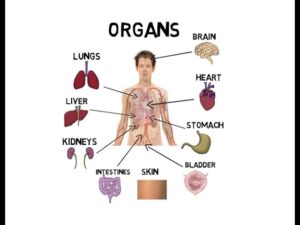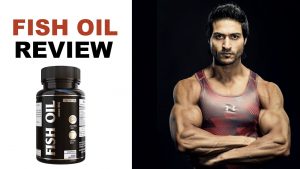Do all proteins pack the same punch? Lynn Goldstein, RD explains. Related Videos: How To Eat a Fiber Rich Diet | HealthiNation http://youtu.be/z_tFs4JZO60 Is Soy a Good Source of Protein? | HealthiNation http://youtu.be/j8ZeERCeZ6U Proteins are an essential part of our diet. They are found in a wide range of foods, everything from burgers to beans. But not all proteins are the same. Things that are bad for you, like saturated fats, often surround proteins. Think about when you bite into a greasy burger. Other proteins are coupled with good things, like vitamins, minerals and fiber. Now think about eating a dish of baked beans. We want proteins because they play a critical role throughout the body, helping to make and repair cells. Every one of your cells contains proteins (and you are made entirely of cells). Proteins are a major part of your muscles, bones, skin and hair. The basic building blocks of proteins are called amino acids. Think of amino acids as letters in an alphabet. Just like our 26 letters can be arranged into hundreds of thousands of words, the 20 basic amino acids can be arranged into tens of thousands of proteins. And while the body can make most of these 20 amino acids, it cannot make nine of them. These nine are called the “essential” amino acids, and we must get them from the protein we ingest in our diets. Proteins in food are considered either complete or incomplete. Animal proteins generally contain all the “essential” amino acids, and are therefore considered complete proteins. The soybean is the only plant protein that is complete. Proteins from fruits, veggies, grains and nuts are missing at least one essential amino acid and are thus incomplete proteins. This is an important point for vegetarians, who need to be sure to eat a variety of foods with protein to get all of their essential amino acids. The benefits of proteins are that they help you feel fuller, and do not cause spikes in blood sugar. And while they are an important part of a healthy weight loss plan, beware of high-protein diets. They are not balanced. All protein sources are not the same, and the trick is to pick out the healthy ones, in the right amounts. Here is what I tell my patients: Eat a mix of proteins, because different sources offer different benefits. With animal proteins, you have to be careful because they often contain a lot of saturated fat. Limit your intake of red meat, and avoid processed meats like deli meats and hot dogs. Both have been linked to a higher risk of certain cancers. The best sources of animal protein are lean meats, like poultry—without the skin–and fish. Substitute dairy products, like butter and whole milk, for low or non-fat options, like skim milk or low-fat yogurt. Proteins like those found in nuts, beans, whole grains, and soy are a good choice. They are a rich source of fiber, vitamins and minerals. Soy products also contain omega-3 fatty acids, and some even contain fiber. There have been claims that soy protein plays a role in preventing hot flashes associated with menopause and chronic disease, but this is not clear. What is clear is that soy products, like tofu or soymilk, can provide a great alternative to the less healthful proteins in your diet. As an experienced nutritionist, I know a lot of people avoid proteins because they are afraid of the fat. Remember some fats are healthful, and so are some proteins. You need them both. When they are eaten from smart sources and in sensible portions they are the foundation of a healthful, balanced diet. Sources Bernstein AM, Sun Q, Hu FB, Stampfer MJ, Manson JE, Willett WC. Major Dietary Protein Sources and Risk of Coronary Heart Disease in Women. Circ 2010;122:876-83. Blatt AD, Roe LS, Rolls BJ. Increasing the Protein Content of Meals and Its Effect on Daily Energy Intake. J Am Diet Assoc 2011;111:290-4. Food, Nutrition, Physical Activity, and the Prevention of Cancer: a Global Perspective. Washington D.C.: World Cancer Research Fund, AICR, 2007. Larsen TM, Dalskov S, van Baak M, et al. Diets with High or Low Protein Content and Glycemic Index for Weight-Loss Maintenance. N Engl J Med 2010;363:2102-13. Leidy HJ, Racki EM. The addition of a protein-rich breakfast and its effects on acute appetite control and food intake in ‘breakfast-skipping’ adolescents. Int J Obes 2010;34(7):1125-33. Epub 2010 Feb 2. Martens MJI, Lemmens SGT, Born JM, Westerterp-Plantenga MS. A Solid High-Protein Meal Evokes Stronger Hunger Suppression Than a Liquefied High-Protein Meal. Obesity 2011;19:522-7. More: http://www.healthination.com/topic-center/index.php?t=essentials_protein

Different Types of Protein | HealthiNation
- Post author:
- Post published:May 15, 2021
- Post category:Uncategorized
- Post comments:0 Comments
You Might Also Like

Orlistat : Facts And Side Effects Of Orlistat Weight Loss Medicine
Angio CT

Abscess

CT Angiography with Dr. Arnder

Examples of Low-Impact Aerobic Exercises : General Fitness Tips

Erector Spinae Back Extension-12

Human Body Systems Video – 2

Anabolic Steroids – History, Definition, Use & Abuse Video – 23

How Testosterone Affects Fat Loss: Real Science of Low-T | Thomas DeLauer

Back Extensions on Stability Ball

Bodybuilding Nutrition, Diet Recipes & Workout – 23

Testosterone & Androgenic Effects Video – 41

Love Psychology Video – 2

CONTRACTION AND RELAXATION

Back Stability Ball Reverse Hyper Extension

Anabolic Steroids – History, Definition, Use & Abuse Video – 15

What is Fish Oil? Omega-3 Benefits & Side Effects Review by Guru Mann

Before You Get Pregnant

Fat Loss, Weight Loss Video – 16

HGH, Growth Hormones & Plant Hormones Video – 47

Sports Nutrition Video – 5

Top 5 Best Amino Acids Supplements 2016 First Half | MassiveJoes.com | Intra-Workout Acid

How To: One Arm Standing Shoulder Press (Improve Shoulder Symmetry and Strength)

Flexibility Stretching Video – 5

My experience with T3, cytomel

Cool Down Exercises After Workout

Obstrics Surgeries Video – 3

Exercise to Lower Stress and Avoid Alzheimer’s Plaque & Tangles

Dumbbell Chest Supported Row

How to get rid of Man Boobs? Workout and Diet Tips.

Anabolic Steroids – History, Definition, Use & Abuse Video – 41

Overweight & Obesity Video – 3

Branches of Physiotherapy Video – 24

Diabetes Symptoms – Diabetes Type 2 and Diabetes Type 1

Endocrine System – Quiz

Barbell Decline Bench Press – HASfit Lower Chest Exercise Demonstration – Decline Press – Pectoral

Seated Rear Delt Machine

Equipment Demo – The Reverse Hyper

Muscular System | How Human Body Works | Human Body Parts and Functions | Human Anatomy 3d

Alli® Weight Loss Aid, Orlistat: Before & After

Of Anatomy and Physiology (2013 – 3D Animation)

